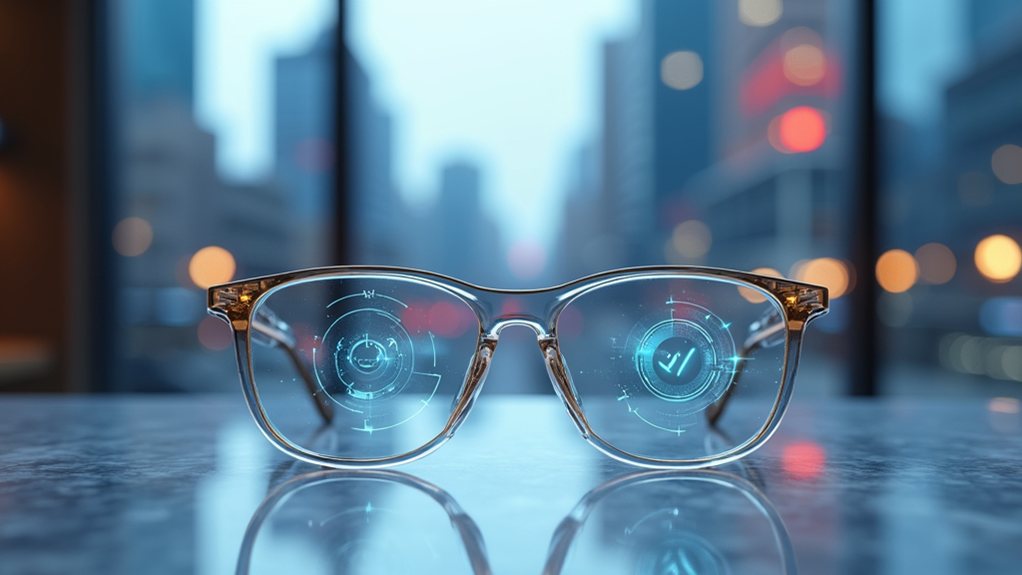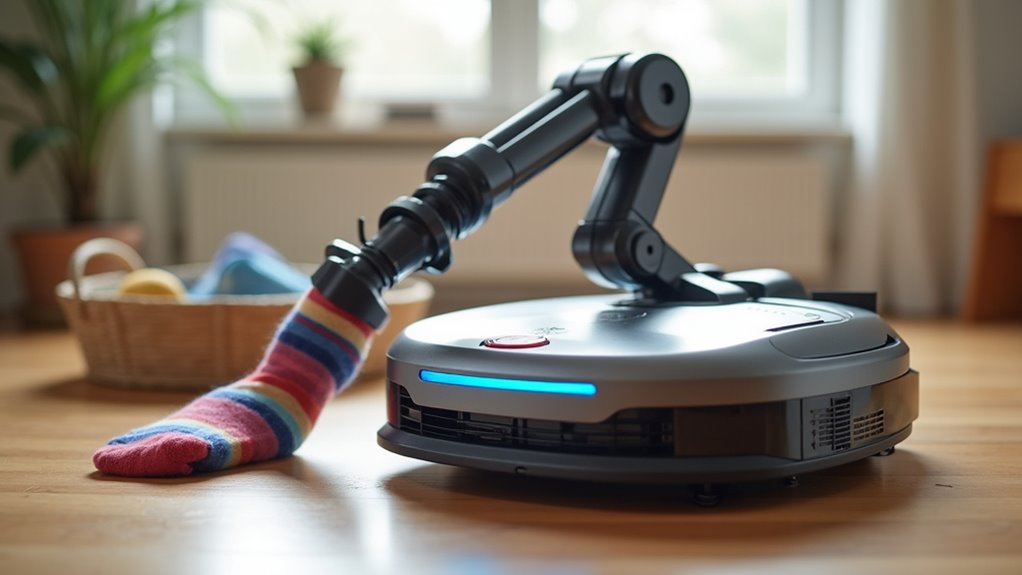AI glasses are shifting from sci-fi fantasy to survival gear as the market explodes from $1.93 billion to $8.26 billion by 2030. Real-time translation, hands-free navigation, and contextual AI assistance eliminate the awkward phone-fumbling dance everyone knows too well. Meta’s 60% market dominance and 210% growth through Ray-Ban partnerships prove people want wearable tech that doesn’t scream “tech bro.” The revolution’s timeline accelerates as functionality meets fashion—and the implications stretch far beyond convenience.
The numbers suggest this isn’t just Silicon Valley wishful thinking. The AI glasses market is projected to explode from $1.93 billion in 2024 to $8.26 billion by 2030, with over 25 million units expected to ship annually. Meta currently dominates with 60% market share, having sold 2 million units already, while their Ray-Ban partnership drove 210% year-over-year growth.
The AI glasses revolution isn’t hype—it’s a $8.26 billion reality arriving faster than Silicon Valley predicted.
What makes these devices compelling isn’t just the *wow factor* of having a computer strapped to your face. Real-time translation overlays eliminate language barriers instantly, while advanced voice commands let you navigate, message, and search without fumbling for your phone. AI assistants provide ambient feedback about your surroundings, offering contextual insights that feel almost telepathic.
Enterprise adoption is accelerating rapidly – 50% of Fortune 100 companies ran AR pilots within three months of Apple’s Vision Pro launch. Early AR advertising shows 30-40% higher engagement than traditional formats, with social sharing rates exceeding 67%. Boeing achieved 88% first-pass accuracy with AR tools, demonstrating the tangible productivity gains these technologies deliver in industrial settings. Major players like Samsung and XREAL are pouring investments into next-gen AI integration to compete in this rapidly expanding market.
The hardware is finally catching up to the hype. 2025 models prioritize fashion-forward design over bulky functionality, with companies like Viture offering 58° field-of-view displays and XREAL pushing 70° FOV in upcoming releases. Micro OLED technology and enhanced lens systems are delivering superior image clarity while maintaining comfort for extended wear. With AI technologies expected to generate global revenue of $15.7 trillion by 2030, manufacturers are racing to capture market share in this transformative sector.
Competition is intensifying as Apple prepares its late-2026 XR launch and Google’s Android XR platform opens doors for new entrants. Designer collaborations with brands like Ray-Ban and Oakley are making these devices actually *wearable* in public without looking like you’re cosplaying a cyborg.
The demand stems from a simple desire: seamless, unobtrusive digital access that doesn’t require constantly staring at a rectangular screen.





